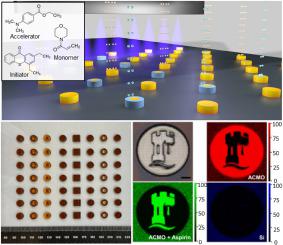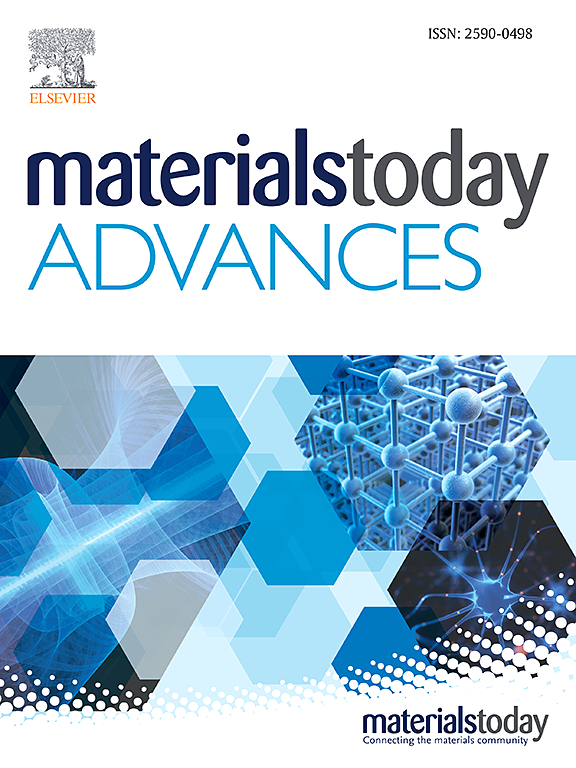Enabling high-fidelity personalised pharmaceutical tablets through multimaterial inkjet 3D printing with a water-soluble excipient
IF 8
2区 材料科学
Q1 MATERIALS SCIENCE, MULTIDISCIPLINARY
引用次数: 0
Abstract
Additive manufacturing offers manufacture of personalised pharmaceutical tablets through design freedoms and material deposition control at an individual voxel level. This control goes beyond geometry and materials choices: inkjet based 3D printing enables the precise deposition (10–80 μm) of multiple materials, which permits integration of precise doses with tailored release rates; in the meanwhile, this technique has demonstrated its capability of high-volume personalised production. In this paper we demonstrate how two dissimilar materials, one water soluble and one insoluble, can be co-printed within a design envelope to dial up a range of release rates including slow (0.98 ± 0.04 mg/min), fast (4.07 ± 0.25 mg/min) and multi-stepped (2.17 ± 0.04 mg/min then 0.70 ± 0.13 mg/min) dissolution curves. To achieve this, we adopted poly-4-acryloylmorpholine (poly-ACMO) as a new photocurable water-soluble carrier and demonstrated its contemporaneous deposition with an insoluble monomer. The water soluble ACMO formulation with aspirin incorporated was successfully printed and cured under UV light and a wide variety of shapes with material distributions that control drug elution was successfully fabricated by inkjet based 3D printing technique, suggesting its viability as a future personalised solid dosage form fabrication routine.

通过使用水溶性辅料的多材料喷墨 3D 打印技术实现高保真个性化药片
通过在单个体素水平上的设计自由度和材料沉积控制,快速成型制造技术为个性化药片的制造提供了可能。这种控制不仅限于几何形状和材料选择:基于喷墨技术的三维打印可实现多种材料的精确沉积(10-80 μm),从而可以整合具有定制释放率的精确剂量;同时,这种技术已经证明了其大批量个性化生产的能力。在本文中,我们展示了如何在设计包络线内共同印制两种不同的材料(一种是水溶性材料,另一种是不溶性材料),以调节一系列释放速率,包括慢速(0.98 ± 0.04 mg/min)、快速(4.07 ± 0.25 mg/min)和多级(2.17 ± 0.04 mg/min,然后是 0.70 ± 0.13 mg/min)溶出曲线。为此,我们采用了聚 4-丙烯酰吗啉(poly-ACMO)作为新型光固化水溶性载体,并演示了其与不溶性单体同时沉积的过程。含有阿司匹林的水溶性 ACMO 制剂在紫外光下成功打印固化,并通过基于喷墨的三维打印技术成功制造出各种形状的材料分布,从而控制了药物的洗脱,这表明其作为未来个性化固体制剂制造工艺的可行性。
本文章由计算机程序翻译,如有差异,请以英文原文为准。
求助全文
约1分钟内获得全文
求助全文
来源期刊

Materials Today Advances
MATERIALS SCIENCE, MULTIDISCIPLINARY-
CiteScore
14.30
自引率
2.00%
发文量
116
审稿时长
32 days
期刊介绍:
Materials Today Advances is a multi-disciplinary, open access journal that aims to connect different communities within materials science. It covers all aspects of materials science and related disciplines, including fundamental and applied research. The focus is on studies with broad impact that can cross traditional subject boundaries. The journal welcomes the submissions of articles at the forefront of materials science, advancing the field. It is part of the Materials Today family and offers authors rigorous peer review, rapid decisions, and high visibility.
 求助内容:
求助内容: 应助结果提醒方式:
应助结果提醒方式:


